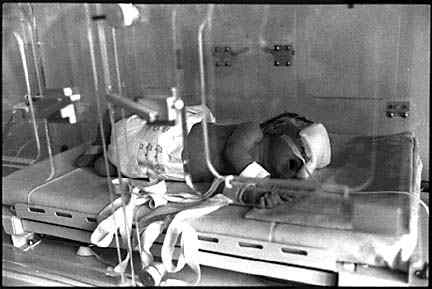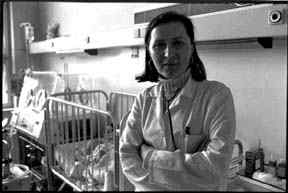




 |
 |
 |
 |
 |
|
| Contents Forward Backwards |
|
Perhaps no other building was filmed so much during the siege of Sarajevo as the trauma ward at the Kosevo Hospital, the main hospital in Sarajevo and one of the best equipped in the former Yugoslavia. Sustaining more than 1000 direct mortar hits, the hospital was too often a way stop for the seriously injured before their final destination, the morgue. Electricity, heat, water, and oxygen were always in short supply. Surgery was performed in operating theaters with rain coming in from the perforated roof. Medicine and surgical dressings were frequently unavailable. During the war, dedicated doctors, nurses, and volunteers worked for cigarettes to sustain the lives of others. Three months after the shelling ended, the head of a surgical unit was making $100 a month -- not enough to supply even the basics for a family, but much more than most Sarajevans would see for many years. Dr. Inda Selmanagic, pictured above, was herself a refugee. She gave us a tour of the overcrowded pediatric clinic. There were 80 children, but only 60 beds. The intensity of our guide left us numb. She told us that she was a happy person, now exhausted and wanting nothing more than a two-week vacation on the coast. It is unlikely she has seen more than a few days off in the last several years. She had less sympathy for Bosnians who left during the war than for the Serbs and Croats who destroyed her country. While gingerly approaching the infant in the incubator, she asked if we were afraid. I was less scared than incredulous that this premature child was beginning its precious life in Sarajevo only a few months after the siege had ended. There were hoses and tubes everywhere, even on the floor. I was petrified that I could extinguish this child's life if I misstepped. |
  |